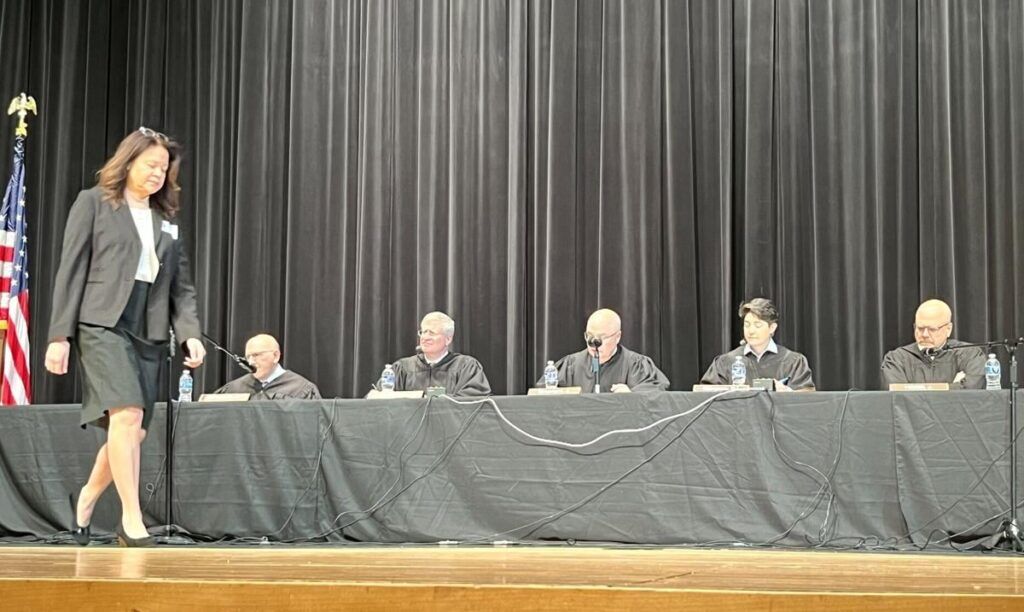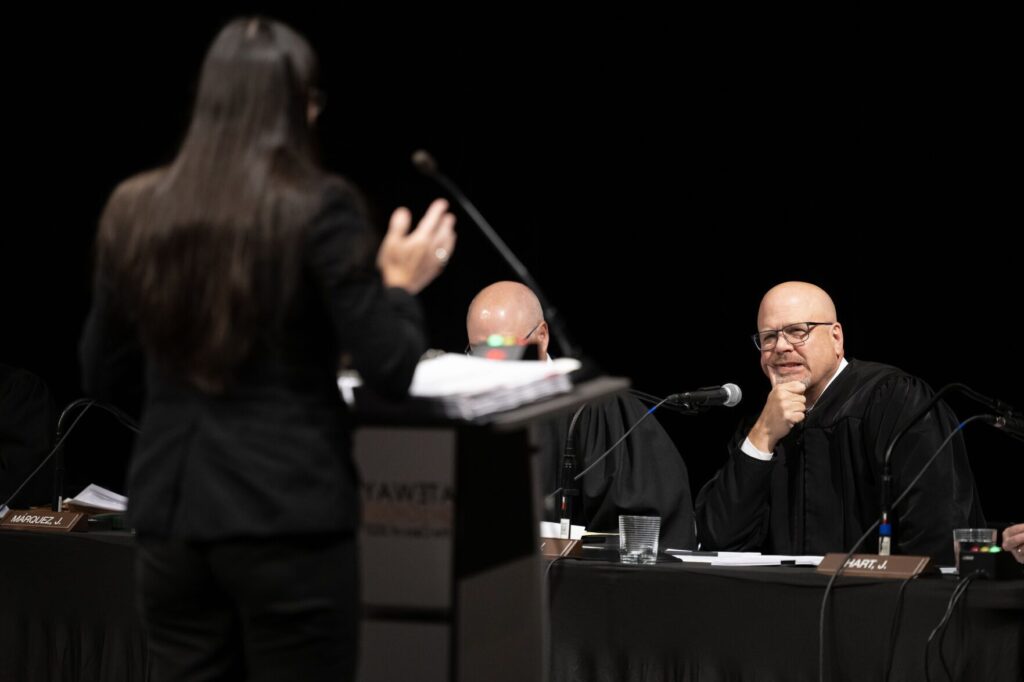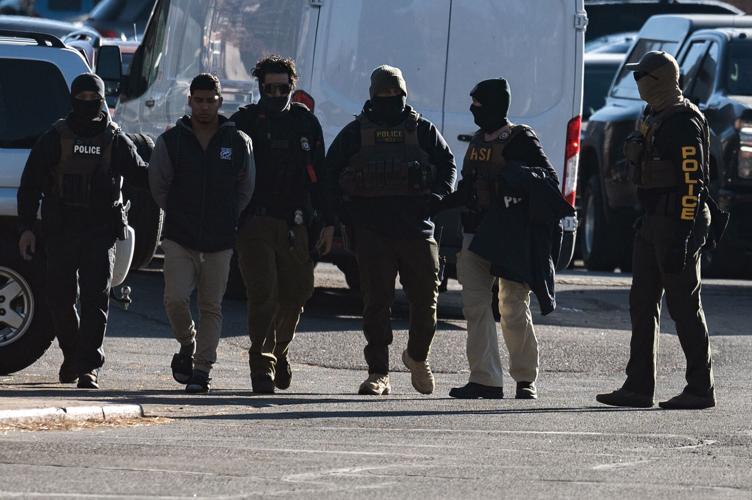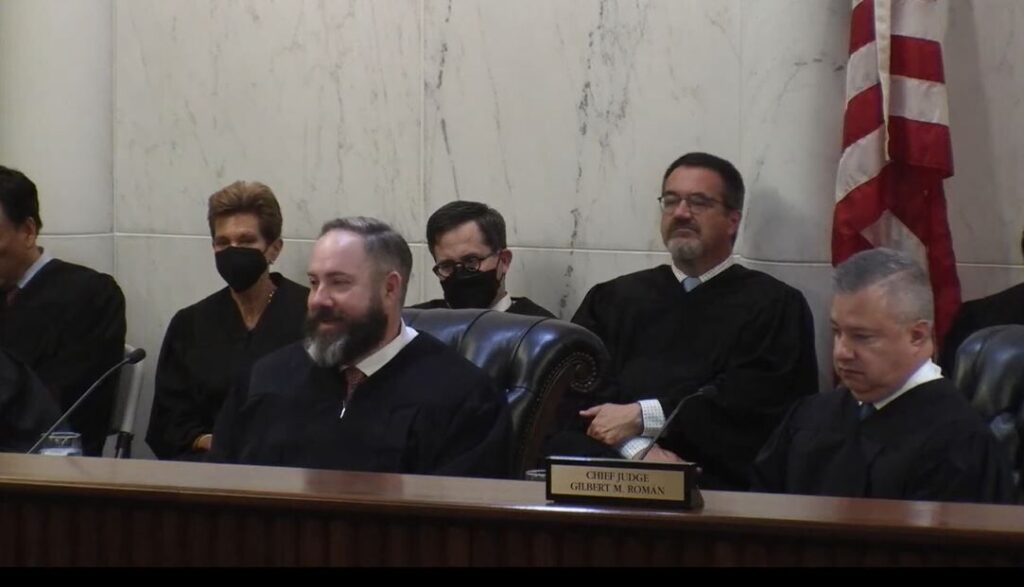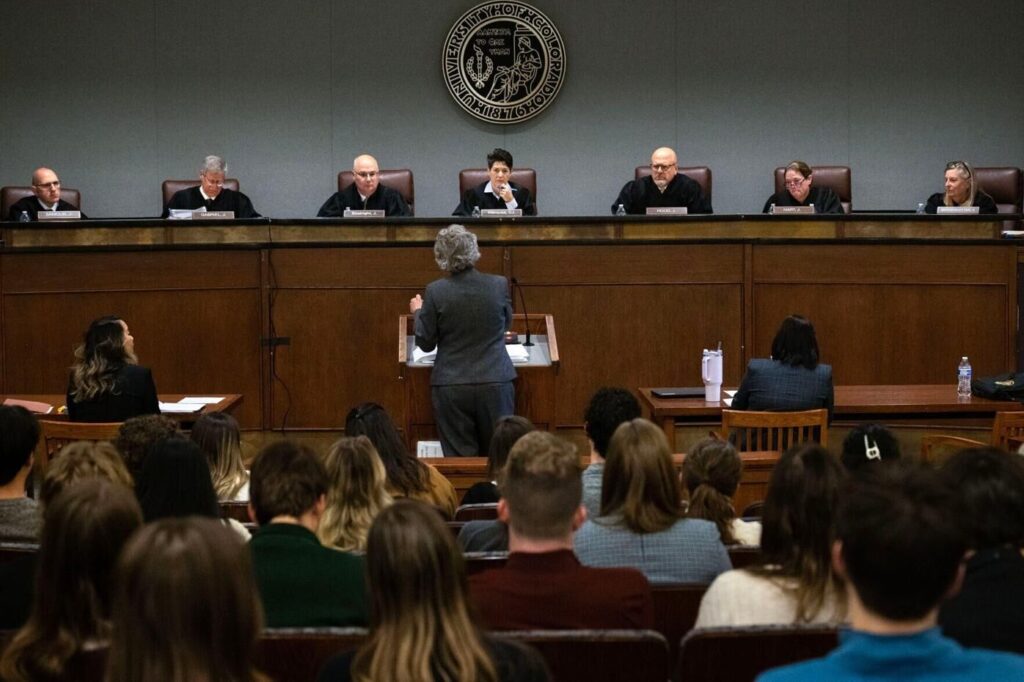By 2-1, appeals court overturns some of defendant’s convictions in Denver gang shooting
Colorado’s second-highest court concluded earlier this month that prosecutors had not proven a defendant placed all alleged victims at risk of serious injury or death in a gang-related shooting, and therefore some of his convictions could not stand.
Alejandro Garcia-Sanchez stood trial for an October 2019 shooting in northeast Denver. He was one of several people who pulled up to a house where an alleged “snitch” resided and fired 20 bullets at the home. Surveillance footage depicted one person returning fire from inside.
Responding officers found three adults and three children were unharmed inside the house. The adults did not cooperate with law enforcement.
Prosecutors charged Garcia-Sanchez with six counts of attempted extreme indifference murder — one for each occupant of the home — and six counts of attempted extreme indifference assault. Jurors convicted him and Garcia-Sanchez received a 96-year prison sentence.
On appeal, Garcia-Sanchez contended most of his convictions should be overturned.
The defense reasoned that the prosecution had not proven each charge was tied to a specific victim. Garcia-Sanchez conceded he was properly convicted as to one victim — whoever returned fire from inside. But responding officers found five people in the basement and it was unclear who had been on the first floor of the house and was actually endangered by the gunfire.
A three-judge panel for the Court of Appeals agreed in part.
In a March 6 opinion, Judge Katharine E. Lum noted it “would be reasonable for the jury to infer” the person who shot back from inside the home was an adult. Further, the shooting took place before 5 a.m. and the only bedroom in the basement “didn’t appear to be a children’s bedroom.” Rather, the evidence strongly suggested the children slept on the first floor.
“Given all this, a jury could reasonably infer that the children were in their bedroom during some part of the shooting and, therefore, that they were at grave risk of death,” she wrote for herself and Judge Christina F. Gomez.
However, there was no evidence suggesting the remaining two adults were on the first floor during the shooting. Therefore, the panel’s majority could not say beyond a reasonable doubt that the gunfire actually put those adults at risk of death or serious bodily injury.
“We do not trivialize the inherently dangerous nature of shooting into a house or the terror the victims must have felt, regardless of whether they were in the basement or on the first floor,” Lum wrote. “Nevertheless, the extreme indifference murder statute does not criminalize conduct that is merely inherently dangerous.”
Judge Terry Fox disagreed with the decision to vacate two of Garcia-Sanchez’s attempted murder and attempted assault convictions. She found it reasonable that jurors convicted Garcia-Sanchez of “spraying a volley of bullets into an occupied home — endanger(ing) six unsuspecting people.”
Fox also noted a jury could “use its common sense” to conclude the occupants may have moved from one floor to the other.
“The jury could also reasonably infer that, upon hearing gunshots, a person might migrate toward their origin; so a victim who was in the basement could be expected to run upstairs,” she wrote. The fact no one was injured “does nothing to remove the very real risk that Garcia-Sanchez’s extremely indifferent and callous actions created, as the jury aptly recognized here.”
The case is People v. Garcia-Sanchez.



